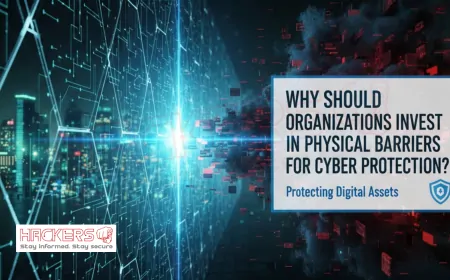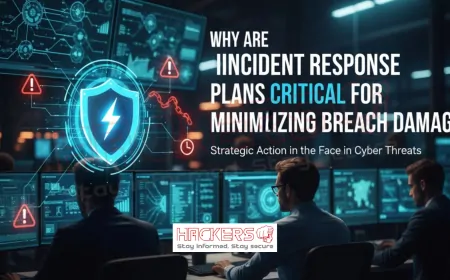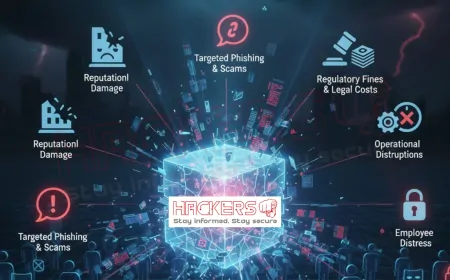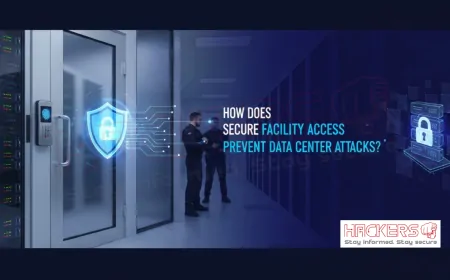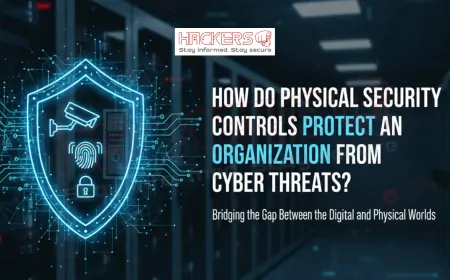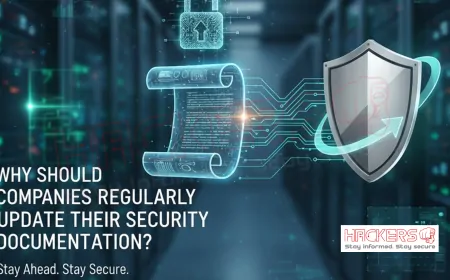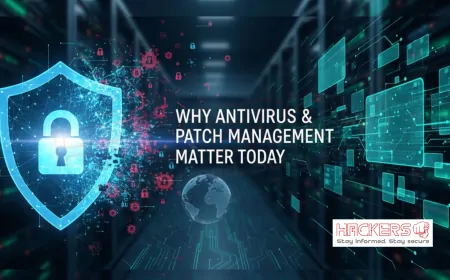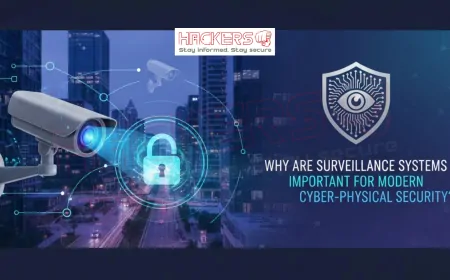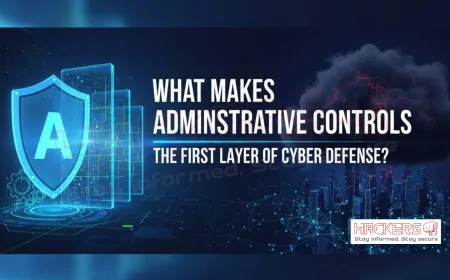How Can Organizations Build Strong Personnel Security in 2025?
Imagine walking into your office one morning only to discover that a trusted employee has accidentally leaked sensitive data through a simple email mistake. Or worse, a disgruntled insider deliberately sabotages your systems. In 2025, with remote work and advanced technologies like AI becoming commonplace, these scenarios are more real than ever. Insider threats now account for about 45% of all data breaches, costing organizations an average of $2.7 million per incident. Building strong personnel security is not just an option: it's a necessity to protect your business from within. This blog post will guide you through practical steps to strengthen your organization's personnel security. We'll cover everything from basics to advanced strategies, using simple language so even those new to the topic can follow along. By the end, you'll have a clear roadmap to safeguard your team and assets in this evolving landscape.

Table of Contents
- Understanding Personnel Security
- Why Personnel Security Matters in 2025
- Key Components of Strong Personnel Security
- Implementation Strategies
- The Role of Technology
- Training and Awareness Programs
- Monitoring and Incident Response
- Common Challenges and Solutions
- Real-World Case Studies
- Best Practices for 2025
- Conclusion
- FAQs
Understanding Personnel Security
Personnel security focuses on protecting an organization from risks posed by its own people: employees, contractors, and partners. It's about ensuring that those with access to sensitive information or systems are trustworthy and follow safe practices. Unlike physical security, which guards buildings, or cyber security, which protects networks, personnel security deals with human factors.
In simple terms, it's like vetting and training your team to prevent insider threats. These threats can be accidental, such as sharing a password unknowingly, or intentional, like stealing data. With 56% of organizations facing insider threats in recent years, understanding this is crucial.
Personnel security includes screening during hiring, continuous monitoring, and clear policies. It's part of a broader security framework, often aligned with standards like those from the Department of Defense or ISO. By addressing human vulnerabilities, organizations can prevent many breaches that technology alone cannot stop.
This foundation helps create a culture where security is everyone's responsibility. As we move into 2025, with rising remote work and AI tools, personnel security must adapt to new challenges like deepfakes or hybrid work environments.
Why Personnel Security Matters in 2025
In 2025, the threat landscape has evolved dramatically. Insider threats are on the rise, with 83% of organizations reporting attacks and average costs reaching $17.4 million annually.
Moreover, AI and automation introduce new risks, such as employees misusing tools or falling for sophisticated phishing. Statistics show that 77% of organizations experienced insider-related data loss in the last 18 months.
Compliance is another driver. Regulations like GDPR and new U.S. defense guidelines require robust vetting and training. Failing to comply can lead to hefty fines. For businesses, it's about protecting reputation and intellectual property in a competitive world.
Finally, a secure workforce boosts productivity. When employees feel safe and informed, they focus better. In 2025, investing in personnel security is a strategic move for resilience against both internal and external threats.
Key Components of Strong Personnel Security
Building personnel security involves several core elements. First, pre-employment screening: background checks, reference verifications, and credit reviews to ensure candidates are reliable.
Next, access controls: using the principle of least privilege, where people get only the access they need. This limits damage from potential breaches.
Policies and procedures outline expected behaviors, like data handling rules. Training reinforces these, teaching about threats like social engineering, where attackers trick people into giving information.
Continuous vetting monitors changes in behavior or circumstances. Exit procedures, such as revoking access upon departure, close loops.
These components form a layered approach, reducing risks step by step.
Implementation Strategies
To implement effectively, start with a risk assessment: identify vulnerabilities in your current setup. Then, develop tailored policies.
Integrate with zero trust models, assuming no one is automatically trusted. Adopt continuous vetting for ongoing checks.
Involve leadership to set examples. Communicate clearly to gain buy-in. Use phased rollouts for smooth adoption.
Measure success through audits and feedback, adjusting as needed.
The Role of Technology
Technology enhances personnel security. Tools like AI-driven monitoring detect unusual behavior, such as odd login patterns.
Biometrics and multi-factor authentication strengthen access. Software for background checks speeds up hiring.
In 2025, AI helps predict risks by analyzing data trends. However, balance tech with privacy to maintain trust.
Integrate tools with training for best results.
Training and Awareness Programs
Training is vital. Regular sessions on threats build awareness. Make them engaging with simulations or games.
Tailor content to roles: IT staff learn about advanced threats, while others focus on basics like password hygiene.
Encourage reporting without fear. Leadership participation reinforces importance.
Update programs yearly to cover new trends like AI scams.
Monitoring and Incident Response
Monitoring involves logging activities and reviewing for anomalies. Use tools to alert on risks.
An incident response plan outlines steps for breaches: contain, investigate, recover.
Regular drills prepare teams. Post-incident reviews improve future responses.
Balance monitoring with employee privacy rights.
Common Challenges and Solutions
Challenges include resistance to change. Solution: involve staff in development.
Resource constraints for small firms: start with basics like free training resources.
Keeping up with evolving threats: schedule regular updates.
Privacy concerns: be transparent about monitoring.
Real-World Case Studies
One case: a tech firm reduced breaches by 40% through continuous vetting.
Another: a bank faced a $10M loss from an insider but recovered faster with a strong response plan.
Lessons: proactive measures pay off.
Best Practices for 2025
Follow these:
- Conduct annual risk assessments.
- Implement zero trust.
- Provide ongoing training.
- Use AI for detection.
- Audit regularly.
- Foster a security culture.
| Component | Description | 2025 Trend |
|---|---|---|
| Screening | Background checks | AI-assisted vetting |
| Training | Awareness sessions | VR simulations |
| Monitoring | Behavior analysis | Predictive AI |
Conclusion
In conclusion, building strong personnel security in 2025 involves understanding risks, implementing key components, leveraging technology, and fostering a culture of awareness. With insider threats costing millions, proactive steps like screening, training, and monitoring are essential. Overcoming challenges through best practices ensures resilience. By following this guide, organizations can protect themselves from internal risks and thrive in a secure environment.
What is personnel security?
Personnel security protects organizations from risks posed by employees and insiders through vetting and policies.
Why is it important in 2025?
Rising insider threats and new technologies make it crucial to prevent costly breaches.
What are insider threats?
Risks from within, like accidental data leaks or intentional sabotage.
How do background checks help?
They ensure hires are trustworthy, reducing potential risks.
What is continuous vetting?
Ongoing monitoring of employees for changes in behavior or status.
Can small businesses afford this?
Yes, start with basic policies and free resources.
What role does training play?
It educates staff on threats, preventing errors.
How does zero trust fit in?
It verifies everyone, limiting access to essentials.
What tech tools are useful?
AI for detection and multi-factor authentication for access.
How to handle resistance?
Involve employees and communicate benefits.
What is an incident response plan?
A guide for managing breaches quickly.
Why monitor behavior?
To spot anomalies early and prevent issues.
Are there privacy concerns?
Yes, balance with transparency and legal compliance.
How often to update policies?
Annually or after incidents.
What stats show the need?
83% of organizations face insider attacks yearly.
Can AI predict threats?
Yes, by analyzing patterns.
What are exit procedures?
Revoking access when employees leave.
How to measure success?
Through audits and reduced incidents.
Does it help compliance?
Yes, meets regulatory requirements.
How to build a security culture?
Through leadership examples and ongoing education.
What's Your Reaction?













